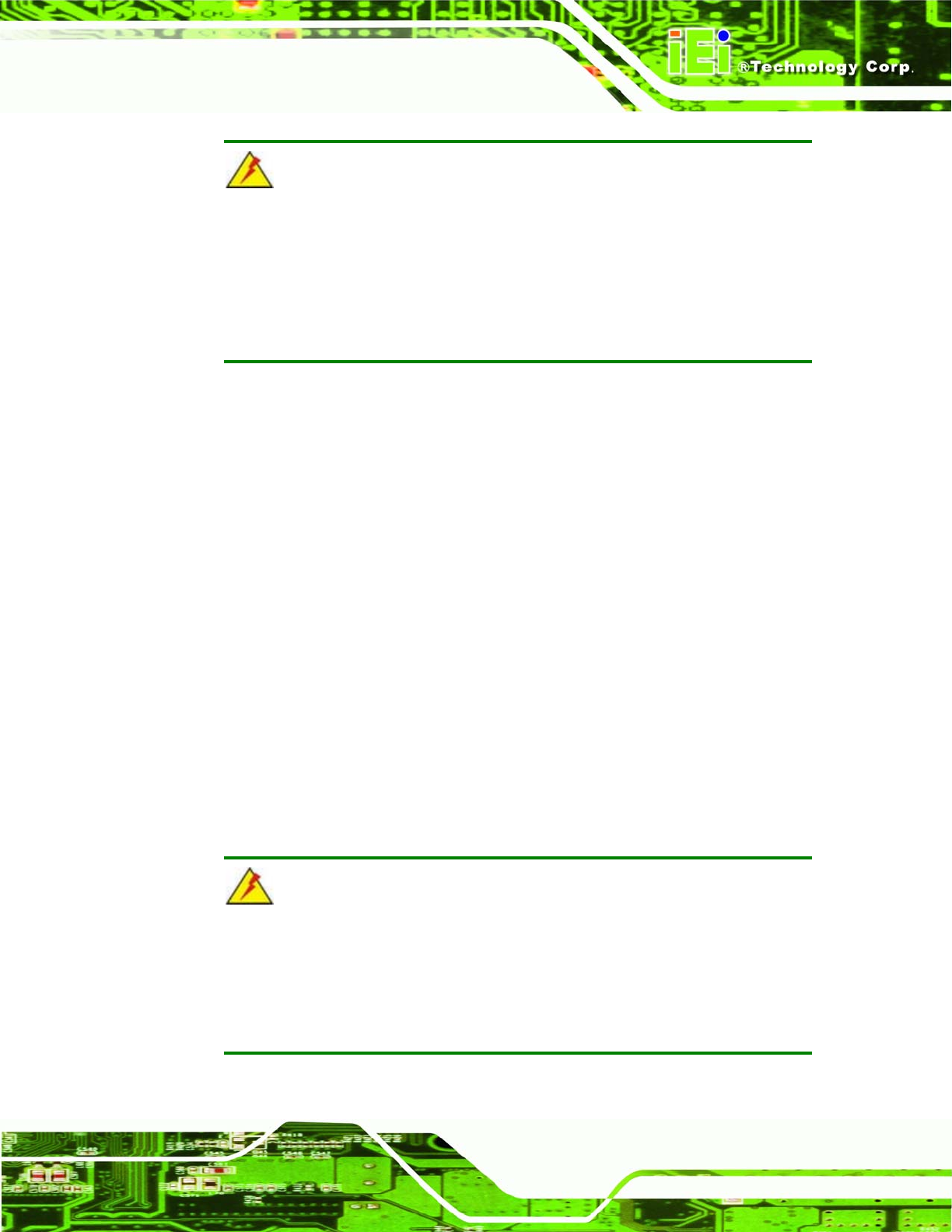Owner manual
Table Of Contents
- NANO-LX EPIC SBC User Manual
- 1 Introduction
- 2 Detailed Specifications
- 2.1 Overview
- 2.2 Dimensions
- 2.3 Data Flow
- 2.4 CPU Support
- 2.5 System Chipset
- 2.5.1 GeodeLink™ Interface Unit
- 2.5.2 AMD® Geode™ CS5536 ATA-6 Controller
- 2.5.3 AMD® Geode™ CS5536 Audio Codec 97 (AC’97) Controller
- 2.5.4 AMD® Geode™ CS5536 Flash Interface
- 2.5.5 AMD® Geode™ CS5536 USB Controller
- 2.5.6 AMD® Geode™ CS5536 Serial Communications
- 2.5.7 AMD® Geode™ CS5536 Real Time Clock
- 2.5.8 BIOS
- 2.6 GeodeLink™ PCI Bridge
- 2.7 Environmental and Power Specifications
- 3 Unpacking
- 4 Connectors and Jumpers
- 4.1 Peripheral Interface Connectors
- 4.2 Internal Peripheral Connectors
- 4.2.1 ATX Connector
- 4.2.2 ATX Power Button
- 4.2.3 Audio CD-In Connector
- 4.2.4 Audio Connector
- 4.2.5 Battery Connector
- 4.2.6 Compact Flash Connector
- 4.2.7 Digital Input Output Connector
- 4.2.8 Fan Connector
- 4.2.9 FDD Connector
- 4.2.10 IDE Interface Connector
- 4.2.11 Inverter Connector
- 4.2.12 IrDA Connector
- 4.2.13 Keyboard/Mouse Connector
- 4.2.14 LED Power Connector
- 4.2.15 LVDS LCD Panel Connector
- 4.2.16 Parallel Port Connector
- 4.2.17 PC/104-Plus Connector
- 4.2.18 Power Connector
- 4.2.19 Power Input Connector
- 4.2.20 Reset Button Connector
- 4.2.21 SATA Drive Ports
- 4.2.22 Serial Communications Connector
- 4.2.23 TFT TTL LCD Connector
- 4.3 External (Rear Panel) Connectors
- 5 Installation and Configuration
- 6 Award BIOS Setup
- 7 Software Drivers
- A BIOS Configuration Options
- B Watchdog Timer
- C Address Mapping
- D External AC’97 Audio CODEC
- E ALi® RAID for SATA
- F Connecting an ATX Power Supply
- G Index

NANO-LX EPIC SBC
WARNING!
All data previously stored on the member drives of a RAID configuration will
be destroyed during the RAID initialization process. If “used” drives are used
to create a RAID array, make sure the data has been moved or backed up
before creating a RAID array out of the disk drives.
Step 1: Use the arrow keys to highlight Create JBOD for Integrated Capacity and
press E
NTER. A flashing ‘J’ appears at the Drive Menu where the member drives
to be included in the JBOD can be chosen.
Step 2: Use the space bar to select members of the JBOD configuration. The flashing
cursor changes to a lower case ‘j’ once any of the connected disk drives has
been selected. Follow the same method to select another member drive. The
maximum number of member drives in a JBOD is four and the minimum is two.
Step 3: The Create RAID1(Y/N) confirm box appears. Press Y.
Step 4: Enter a nickname for the created array. Upper and lower case alphabetic,
numeric, space, and underscore characters are all applicable for naming an
array.
Step 5: Once an array is successfully created, it will be seen in the list of configured
arrays. Step 0:
NOTE:
To reduce the chance of losing data, ALi imposes certain limitations on the
RAID configuration options. Parallel-ATA drives connected on the same IDE
channel cannot be selected as the members of a RAID1 array. Avoid mixing
Parallel-ATA and Serial-ATA disk drives in a RAID1 array.
Page 221










